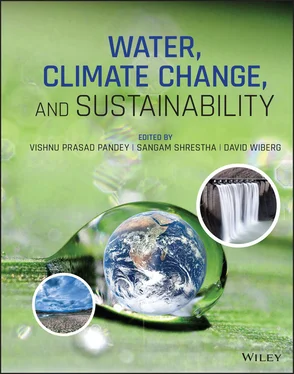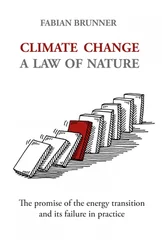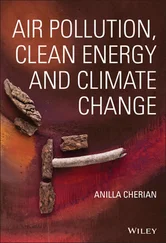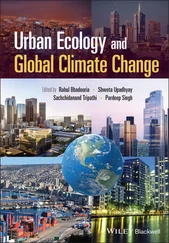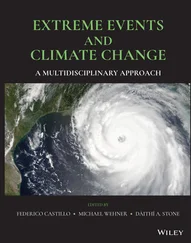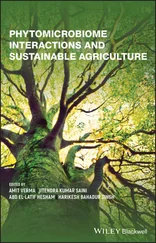1.1 SUSTAINABILITY CHALLENGES AND GLOBAL INITIATIVES
Population growth, land use/cover change, unsustainable consumption patterns, desertification, urbanization, biodiversity loss and climate change are among the key global challenges that are impacting humans and the ecosystem in various ways. They are putting stress on our planet’s resources and threatening the very sustainability of livelihood support systems. With increased population, urbanization, and change in lifestyles and dietary systems, we are increasing resource footprints, which are expressed in terms such as water footprint (Chapagain and Hoekstra 2004), ecological footprint (Walther et al. 2005), and energy footprint and/or carbon footprint (Sovacool and Brown 2010; Pradhan et al. 2013; Pradhan and Kropp 2020). Our actions are exerting more stress on the Earth’s natural resources and the Earth has its own planetary boundaries (Steffen et al. 2015). Therefore, for addressing the sustainable development challenges, we need coordinated actions at global, regional, and local levels under various sectors, in particular, water and climate change.
Understanding the aforementioned needs and efforts to that end itself is not new. The Stockholm Convention in 1972 is the first international conference on environmental issues which became a turning point for international environmental politics ( Table 1.1). The United Nations Conference on Water held in Mar del Plata, Argentina in 1977 is of significance in the water and environment sector as it approved the Mar del Plata Action Plan, which was the first internationally coordinated approach to the integrated water resources management (IWRM) (Biswas 2004). Since then, a number of notable global commitments and initiatives were agreed and implemented as the global goals. They include but not limited to Agenda 21 and Convention on Biological Diversity (CBD) which was agreed on the 1st Earth Summit held in Rio de Janerio in 1992; establishment of intergovernmental institutions such as Intergovernmental Panel on Climate Change (IPCC) established jointly by the World Meteorological Organization (WMO) and the United Nations Environment Programme (UNEP) in 1988; Kyoto Protocol on curbing greenhouse gas emissions agreed in 1997 and came into effect from 2005; Millennium Development Goals (MDGs) agreed in the UN Millennium Summit in 2000; establishment of Intergovernmental Science‐Policy Platform on Biodiversity and Ecosystem Services (IPBES) in 2012; Hyogo Framework for Action (HFA, 2005) for building resilience of nations and communities, Sendai Framework on Disaster Risk Reduction (SFDRR 2015); 2030 Sustainable Development Agenda and Sustainable Development Goals (SDGs) agreed in 2015 by the UN General Assembly; and Paris Agreement adopted by the parties of United Nations Framework Convention on Climate Change (UNFCCC) in COP21, held in 2015 in Paris ( Table 1.1), as the post‐Kyoto Protocol measures for dealing with greenhouse gas (GHG) mitigation, adaptation, and finance; among others.
Of the most recent set of global commitments, Paris Climate Agreement (PCA) and SDGs are highly interconnected to each other and comprehensively cover major domains of sustainability, particularly water sharing, in both breadth and depth (Dzebo et al. 2019). For example, impacts of climate change to various sectors are primarily manifested thorough water and achieving SDGs are hinged at securing water and achieving water‐related targets. Water is not explicitly mentioned in the PCA, however, a closer analysis revels its dependence on adequate water resources to a deeper extent. Adaptation initiatives related to conserving freshwater, coastal water and groundwater are included as the first priority in many nationally determined contributions (NDCs) (UN‐Water, 2019a). As outlined in Table 1.2, water security underpins sustainable development as it shares a close interdependency with multiple sustainability challenges (UN‐Water 2019b). SDGs are the interconnecting system rather than just collection of goals, indicators and targets (Pradhan 2019). Sustainable water management will be crucial in determining whether the world achieves the SDGs and aspirations for reducing poverty and enhancing shared prosperity (World Bank 2016). Therefore, we need solutions that ensures water does not become a constraint on prosperity.
Achievement of SDGs depends on the wise use of the water resources and appropriate climate actions, among others. However, sustainable use, management, and governance of water resources considering multiple sectors (e.g., energy, water, environment, etc.) and dimensions (e.g. social, economic and environment) in the context of climate change is a challenging as well as rewarding endeavor. It is therefore imperative to make the best use of hydro‐ and climate‐sciences and associated tools/techniques for localizing and mainstreaming global commitments such as the 2030‐Agenda (or SDGs), without which realizing the global commitments is less likely. The term “localizing” here refers to customizing the global commitments to local contexts (national and sub‐national levels) in terms of targets and internalizing through adequate provisioning of resources, both financial and human. In this context, this chapter sheds light on the evolution of water and climate as global agenda; formulation and governance of SDGs; linkages between water, climate change, and SDGs; and challenges and opportunities associated with localizing the global commitments. This chapter highlights how the organization of the contents and chapters covered in this book addresses the close connectivity among the three issues, namely, water, climate change, and sustainable development.
1.2 EVOLUTION OF WATER AND CLIMATE CHANGE AS GLOBAL AGENDAS
The water and climate change are high profile political agenda, they have implications at different scales, and solutions are usually context‐specific. Range of actions at different spatial and temporal scales are required to address challenges of water management and climate change at the global level. This section highlights how water and climate change evolved over the time to become global agenda.
1.2.1 Evolution of Water as a Global Agenda
History of water use, evolution of water management paradigm, and associated aspects are well documented in Hassan (2011), and context of increasing realization of water’s role in the overall development process in Biswas (1983). Here we synthesize the evolution from the lens of water as a political and governance issue.
Table 1.1 Selected global initiatives in the areas of environment, water and climate.
| S.N |
Year |
Name of the Initiative |
Description |
| 1. |
2016 |
The New Urban Agenda |
It was adopted at the United Nations Conference on Housing and Sustainable Urban Development (Habitat III) in Quito, Ecuador, on 20 October 2016. It was endorsed by the UN General Assembly at its 68th plenary meeting of the 71st session on 23 December 2016. It represents a shared vision for a better and more sustainable future. |
| 2. |
2015 |
Paris Climate Agreement (PCA) |
A global agreement within the United Nations Framework Convention on Climate Change (UNFCC) dealing with greenhouse gas emissions mitigation, adaptation and finance starting from 2020. It was adopted by consensus by 195 state parties on 12 December 2015 at the 21st Conference of Parties of the UNFCCC in Paris. This agreement went into effect from 4 November 2016. It is the post‐Kyoto Protocol measures for curbing greenhouse gas emission. |
| 3. |
2015 |
Sustainable Development Goals (SDGs) |
The 2030 Agenda for Sustainable Development, adopted by all UN Member States through UN Sustainable Development Summit held in September 2015, provides a shared blueprint for peace and prosperity for people and planet, now and into the future. There are 17 SDGs, which are an urgent call for action by all countries in a global partnership. |
| 4. |
2015 |
Sendai Framework for Disaster Risk Reduction (SFDRR) |
The Sendai Framework for Disaster Risk Reduction (SFDRR) 2015‐2030 was adopted at the Third UN World Conference on Disaster Reduction in Sendai Japan in 2015. It includes seven targets and four priorities for action to reduce the occurrence and impact of disasters resulting from natural hazards. Among those priorities, the Sendai Framework calls for the strengthening and implementation of global mechanisms on hydro‐meteorological issues. |
| 5. |
2005 |
Hyogo Framework for Action (HFA) |
The World Conference on Disaster Reduction in 2005, 168 states adopted the first global framework for DRR. The core of the Hyogo Framework Action 2005‐2015 consists of three strategic goals, a number of guiding principles, five priorities for action, and considerations for implementation and follow up. |
| 6. |
2000 |
Millennium Development Goals (MDGs) |
The MDGs are eight goals with measureable targets and clear deadlines for improving the lives of the world’s poorest people, agreed by leaders of 189 countries in the form of millennium declaration at the UN Millennium Summit in 2000. |
| 7. |
1997 |
Kyoto Protocol |
Signed in 1997 and came into effect from 2005 commits state parties to reduce greenhouse gas emissions based on the premise that global warming exists, and that human‐made CO2 has caused it. This is a first of its kind agreement which has currently 192 parties to it, which divides the countries in Annexed and non‐Annexed countries thus distinguishing between the developing and developed world in combating climate change |
| 8. |
1996 |
United Nations Convention to Combat Desertification (UNCCD) |
Signed in 1996 and came into effect in 1996, it is a convention to combat desertification and mitigate the effects of drought through national action programs that incorporate long term strategies supported by international cooperation and partnership agreements. |
| 9. |
1993 |
Convention on Biological Diversity |
It is a multilateral treaty with three main goals – conservation of biological diversity, sustainable use of its components, fair and equitable sharing of benefits arising from genetic resources. Its objective is to develop national strategies for conservation and sustainable use of biological diversity. It is a key document regarding sustainable development. It was drafted on 22 May 1992, signed during 5 June 1992 to 4 June 1993, and became effective from 29 December, 1993. It has been ratified by 30 States. |
| 10. |
1992 |
United Nations Framework Convention on Climate Change (UNFCCC) |
The first UN Conference on Environment and Development (or Rio Conference or Earth Summit) was held in Rio de Janeiro in Brazil, which succeeded in raising public awareness of the need to integrate environment and development. UNFCCC was an outcome of the conference, which is a climate change agreement that led to the Kyoto Protocol, Agenda 21, the United Nations Convention on Biological Diversity, and the UN Convention to Combat Desertification. |
| 11. |
1992 |
Agenda 21 with a focus on Integrated Water Resources Management (IWRM) |
Among the major international water management events, 1992 UN conference on environment and development (UNCED) held at Rio de Janeiro stands out as an event of outstanding importance. UNCED covered a very broad range of development issues and from a water resources perspective was informed by the International Conference on Water and Environment with its highly influential “Dublin Principles. UNCED produced “Agenda 21”, which in section 2 of Chapter 18 mentioned about integrated water resources management (IWRM). |
| 12. |
1988 |
Intergovernmental Panel on Climate Change (IPCC) |
Is a scientific and intergovernmental body under the auspices of United Nations dedicated to the task of providing the world with an objective, scientific view of climate change and its political and economic impacts. It provides scientific, technical and socio‐economic information relevant to understanding of risk of human induced climate change, its potential impacts and options for adaptation and mitigation. |
| 13. |
1987 |
Montreal Protocol |
Montreal Protocol on substance that deplete the Ozone layer in an international treaty designed to protect the ozone layer by phasing out the production of numerous substances that are responsible for ozone depletion for example chlorofluorocarbons (CFCs) that are present in our air‐conditioners and refrigerators. It was agreed on 16 September 1987 and entered into force on 1 January, 1989. |
| 14 |
1977 |
Mar del Plata Action Plan |
The UN Conference on Water was held in Mar del Plata, Argentina in 1977. The conference approved the Mar del Plata Action Plan, which was the first internationally coordinated approach to IWRM. It discussed assessment of water use and efficiency; natural hazards, environment, health and pollution control; policy, planning and management; public information, education, training and research; and regional and international cooperation (Biswas, 2004). The conference considered water management on a holistic and comprehensive basis, an approach recognized as one of the key IWRM issues in the 1960s. The conference was a major milestone in the history of water resources development for the twentieth century. |
| 15 |
1972 |
United Nations Conference on the Human Environment and Stockholm Declaration |
Also known as the Stockholm Conference, it was the UN's first major conference on international environmental issues. Along with the declaring 26 principles concerning the environment and development (Stockholm Declaration), it marks a turning point in the development of international environmental politics, including establishment of UN Environmental Programs (UNEP, currently renamed as UN‐Environment). |
Table 1.2 Sustainability challenges across multiple sectors or issues interlinked with water security.
Читать дальше
